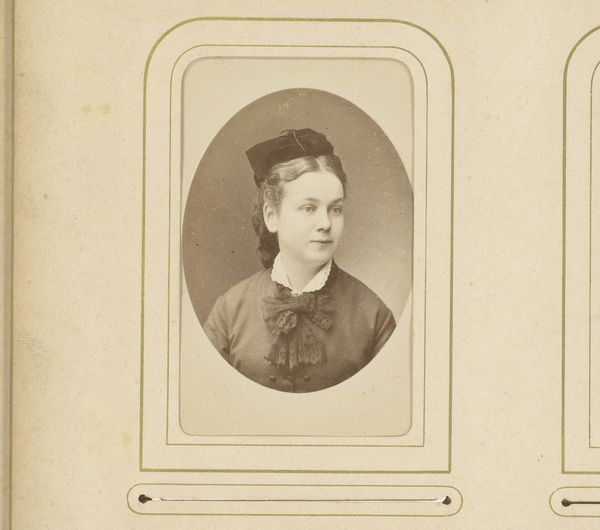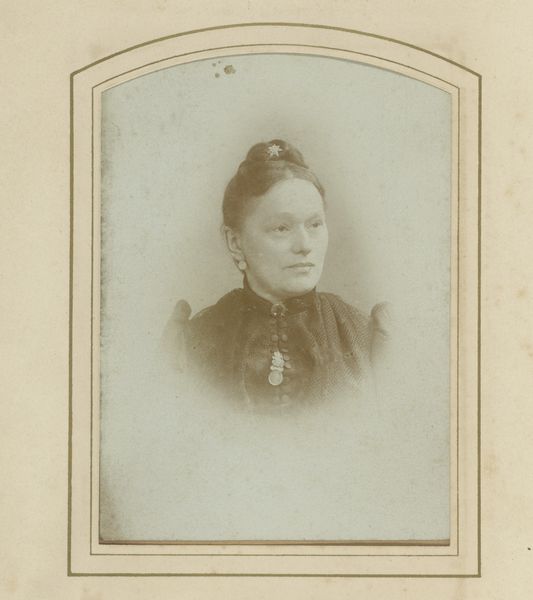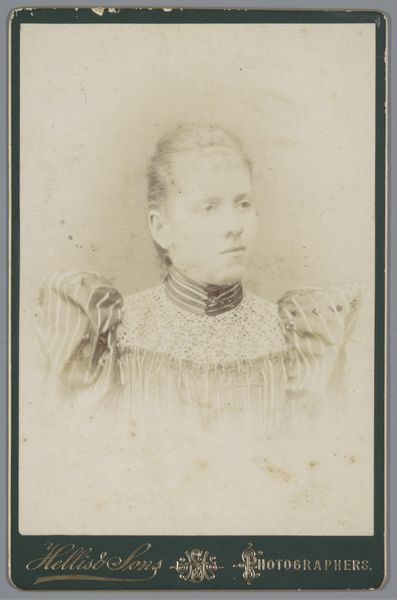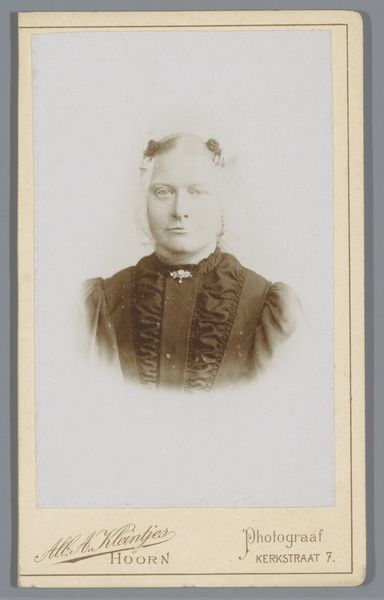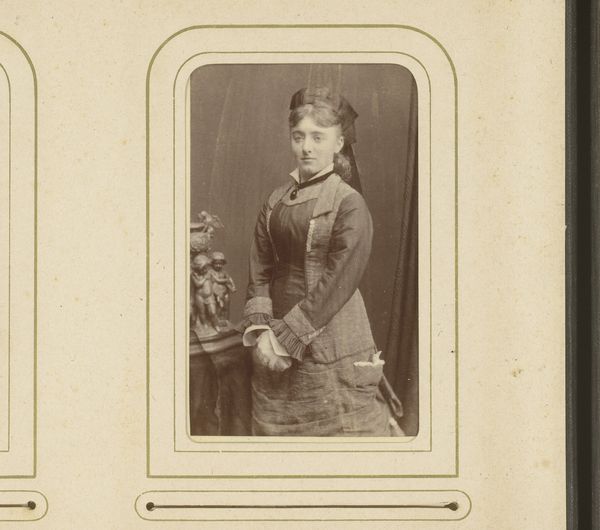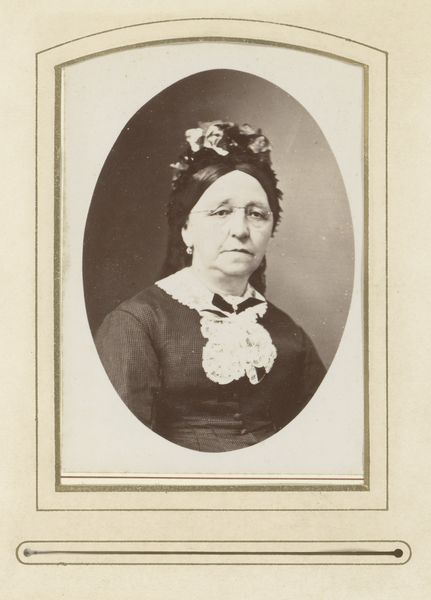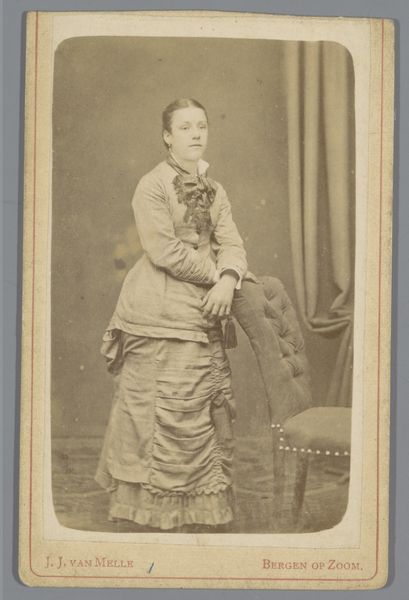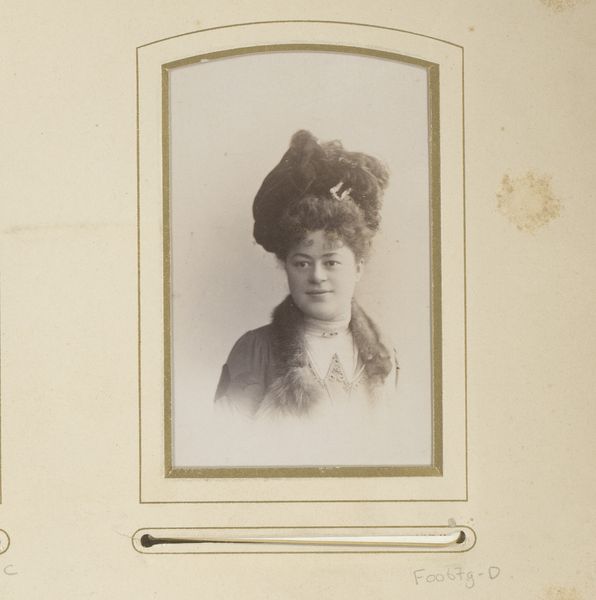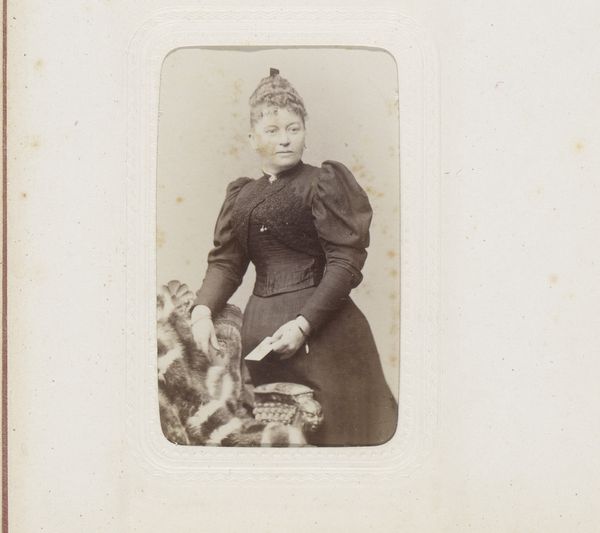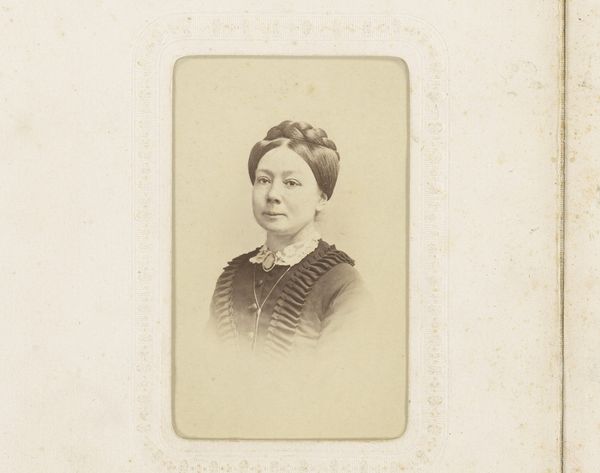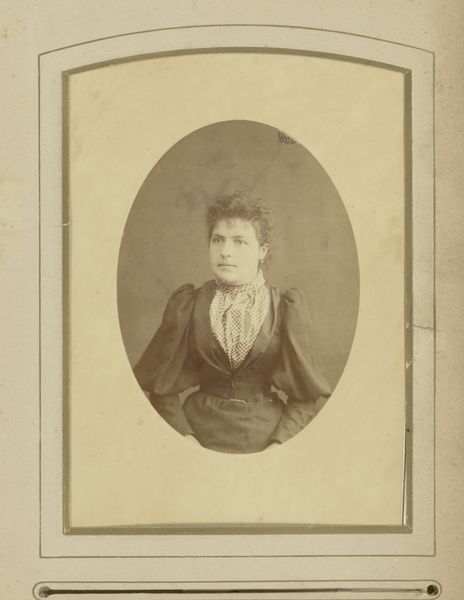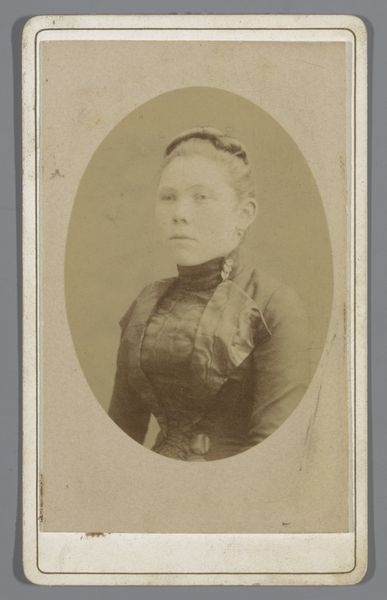
photography
#
portrait
#
photography
#
19th century
#
charcoal
Dimensions: height 82 mm, width 52 mm
Copyright: Rijks Museum: Open Domain
Editor: So, we're looking at a photograph called "Portret van een vrouw met hoofddeksel" by A. Moriau, created somewhere between 1888 and 1890. It's striking how formally composed it is; the woman looks quite stern, and her clothing suggests a certain status. What can you tell me about the image in terms of its historical and cultural context? Curator: It's a fantastic example of late 19th-century portrait photography, reflecting evolving social dynamics. Consider the rise of the middle class and their desire to emulate aristocratic portraiture. This image presents a very deliberate performance of status. What does the ornate oval frame and the woman's formal attire communicate to you? Editor: I think the oval frame is pretty common for that period. The dark clothing seems somber and dignified; like it wants to communicate that she is a woman of a higher class. Curator: Precisely. Think about photography’s accessibility during this era, the act of commissioning such a portrait solidified one's place in society and their visual presence in the public sphere. Moreover, such formality reflects a shift from the traditionally painted portraits available mostly to aristocracy. What role does access and ownership play here? Editor: That's interesting. Owning a photograph made art accessible to people and expanded the social impact art can make on the general public, so more people were involved. What's striking to me now is how ubiquitous photographic portraits became soon after this picture. Curator: Exactly. So, the photograph, in a way, democratizes portraiture, challenging pre-existing notions of representation and power. In essence, it offers a new, technologically advanced method for crafting and disseminating identities in a rapidly modernizing world. Editor: Thanks, that's really changed how I see it. I guess portraits, and especially photography, become powerful tools for displaying your belonging in a social hierarchy and for the overall democratisation of visual arts. Curator: I agree, considering these elements provides a fuller comprehension of the socio-cultural context intrinsic to the artwork, revealing how it functions within broader art production practices.
Comments
No comments
Be the first to comment and join the conversation on the ultimate creative platform.
